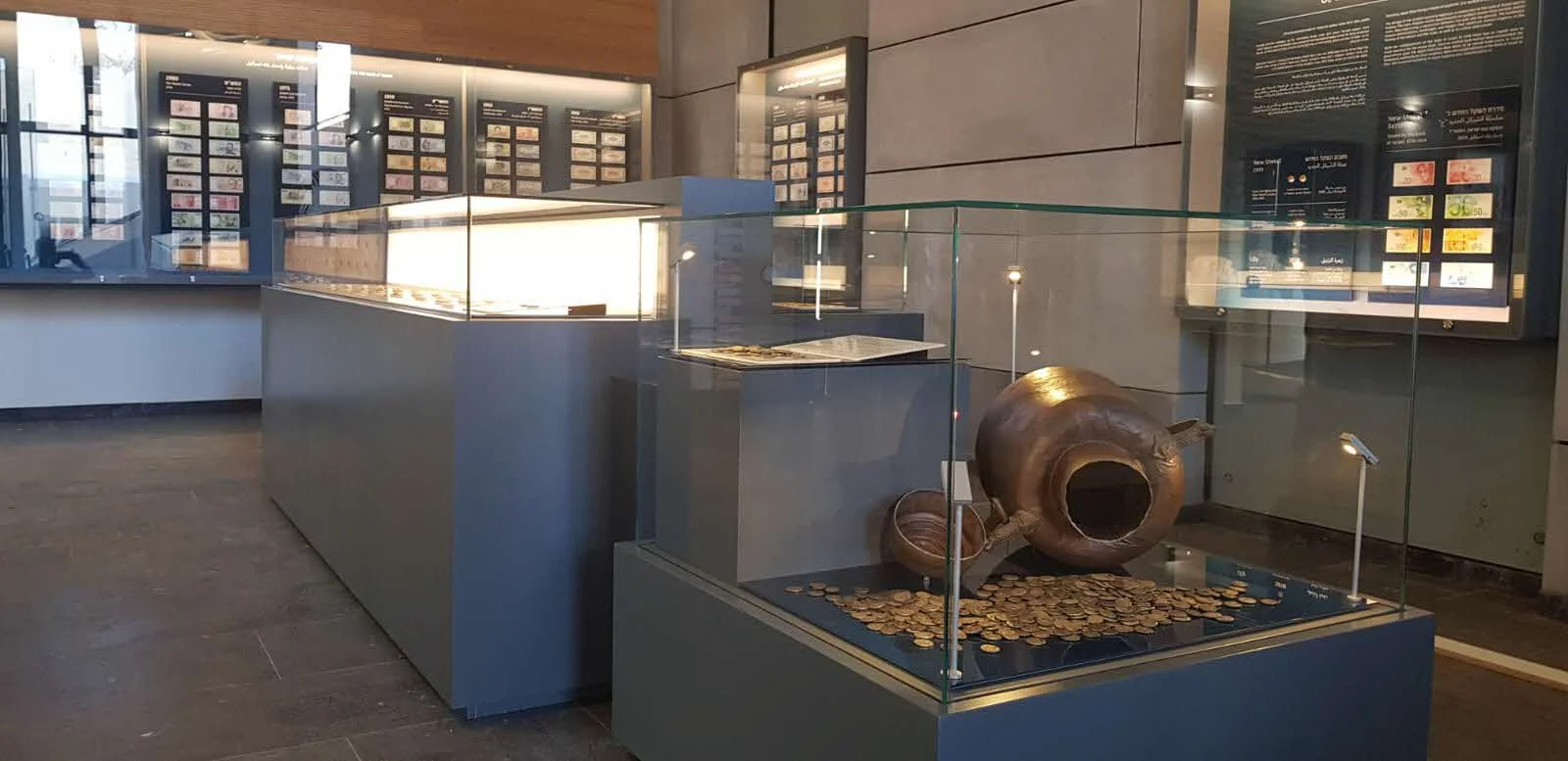Exhibit at Bank of Israel displays for first time most important ancient caches discovered in Israel
Before the days of modern banking, ancient peoples were still 'depositing' their funds for safekeeping. Although usually buried under a floor rather than placed in an account, their methods proved to be quite successful in terms of safeguarding their moneys. Caches left un-retrieved by their owners have remained hidden for hundreds of years until at last discovered through archaeological excavations.
This week, a new archaeological exhibit opened at the Bank of Israel in Jerusalem. Located in the bank’s recently renovated lobby, the exhibit displays several of the most spectacular ancient coin caches ever discovered in Israel. The eye-catching coins are displayed together with the coffers and vessels they were originally stashed in. The exhibit was inaugurated by the Bank of Israel’s CEO and Israel Hasson, the Director of the Israel Antiquities Authority (IAA).
Display at the Bank of Israel. Photo: Courtesy of the Israel Antiquities Authority.
The display consists of three major hoards, residing in the Saul A. Fox National Coin Center, two of which have never before been displayed to the public. The earliest of the collections dates to the Great Revolt against the Romans, and was discovered at the desert fortress of Masada in 1963 by Yoga Yadin. The cache includes 12 shekels and half-shekels minted in Jerusalem. Also a part of this collection is a rare coin dating to the first year of the Rebellion. The coins were stored in bronze cup and buried beneath the floor of the Zealot leaders’ headquarters in Masada.
The second cache, is a collection of 10,421 large coins and is the largest hoard ever discovered in Israel. This treasure trove was contained in an ornate copper coffer and buried in the Negev desert sometime during the first half of the 3rd century CE. Archaeologists estimate this hoard would have been worth 400 annual salaries of Roman legionaries.
Display at the Bank of Israel. Photo: Courtesy of the Israel Antiquities Authority.
The third and latest collection on display dates to the beginning of the Byzantine era. This exhibit shows 47 pure gold coins which where found at Beit Shean as part of a larger cache.
Display at the Bank of Israel. Photo: Courtesy of the Israel Antiquities Authority.
The tasteful exhibit, housed inside the very building where Israel’s currency is managed today, invites guests to reflect on ‘banking’ methods from across the centuries. As Dr. Donald T. Ariel, head of the IAA’s Coin Department, aptly states, “The caches take us to human moments in history, to times when - in the absence of secure banks like today - private individuals or government officials, hid private or public capital with the intention of collecting it but unfortunately they did not reclaim it.” For hundreds of years their deposits remained safely hidden, until eventually discovered through archaeological excavation.
Display at the Bank of Israel. Photo: Courtesy of the Israel Antiquities Authority.
The exhibit can be viewed through guided tours provided by the Bank during holidays and weekdays, as well as upon request by prior arrangement.





